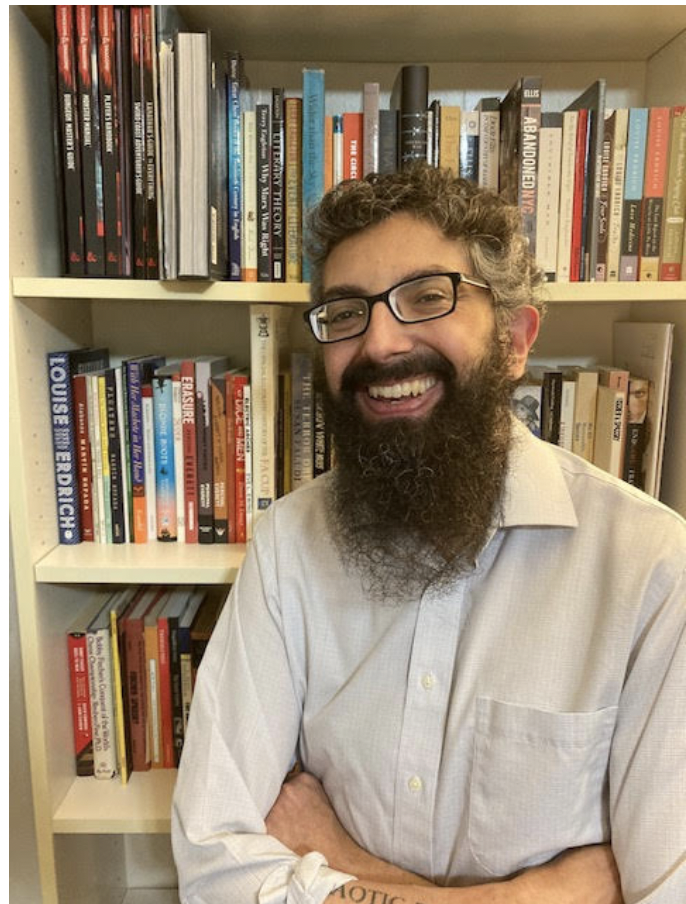Parts of this article have been edited for clarity.
Daniel Shank Cruz’s Twitter biography is lengthy.First, there is the flag of Puerto Rico, in emoji form. Afterwards, the entry reads, “queer disabled Mennonite lit Phd MFAing@Hunter_College. Author of Queering Mennonite Literature (Penn State UP, 2019). he/they.”
Shank Cruz, 42, a former associate English professor who is now completing a MFA in Creative nonfiction at Hunter College, City University of New York, wears quite a few hats.
Growing up in Mennonite communities in Lancaster and eventually Goshen, Shank Cruz had difficulty finding a space to internalize and accept his identity as a queer person.
In 2019, he published “Queering Mennonite Literature” (Penn State University Press). The book features and archives examples of recent literature that brings together Mennonite authors and subject matter along with queer people, “bridging the gaps between queer theory, literary criticism, and Mennonite literature.
“It was partly a response to the queer phobia I experienced in my Mennonite upbringing,” he said, “which certainly continued at my time at Goshen. I didn’t realize I was bisexual until after I left Goshen because there wasn’t any space to think about that as a possibility. The book is a response to that, but also a hopeful act to provide a base to make queer Mennonite identity visible for others who need it.”
What does Mennonite literature have to do with queer theory?
“Queer theory’s lifespan has coincided with the rise of Mennonite literature as a field of academic study,” he said, “two fields (that) also share many thematic similarities that manifest themselves in queer Mennonite literature despite seeming like the ‘oxymoron.’ ”
In public discourse, the word “queer” is used as a synonym for nonheterosexual sexuality, as in the abbreviation LGBTQ (lesbian, gay, bisexual, trans, queer). Shank Cruz argues for broadening the definition of queer theory beyond sexuality.
“Queer theorists insist that the term is not necessarily tied to sexuality but is political, with a radical vision for a transformed, non-oppressive, intersectional society — and thus that queer theory is inherently political,” he said.
This definition of queer, Shank Cruz explains, expands beyond sexuality, bringing us back to the original meaning of the word “queer”: strange, or odd. Different. Not necessarily conforming to societal standards.
“The queer in “queer theory” is not just about sexual orientation,” he said. “It is about how one views the world, using the act of queering to question basic assumptions, such as the male/female binary in service of an anti-hegemonic worldview.”
Historical literature describes Mennonites as “queer” in the traditional sense, Shank Cruz said. In a 1952 article in Ladies’ Home Journal, Dorothy Thompson, a non-Mennonite writer, visited Mennonite- owned Bethel College with a fellow traveler, telling her that Mennonites “are queer people” because of their rural sectarianism and how they dress.
This queerness isn’t limited to dress and cultural expression; it’s also present in traditional Mennonite moral standards.
“Traditional Mennonite thinking, which embraces values such as pacifism, simple living and an emphasis on ethics rather than creeds,” Shank Cruz said, “is out of step with cultural norms today just as it was 70 years ago.”
Mennonites are known for having views that differ from “the World.” However, Shank Cruz thinks the culture misses the mark with some of its more traditional teachings, especially from when he was growing up in the 90s.
“I was taught that basically the only way to have any healthy sexual expression is in a heterosexual marriage,” he said. “And that is really problematic because what about people who are single? Whether they’re queer or not, what about teenagers who aren’t ready to get married yet? Or people in their 20s who aren’t ready to get married yet? So, the church teaches that sexuality is God’s gift but then denies that gift to a great many people.”
Shank Cruz grew up in an era that preceded more mainstream acceptance of gender fluidity. Why does he use the pronouns he/they, and what do they mean?
“I don’t personally use the term non-binary for myself,” Shank Cruz said. “I use a ‘them’ pronoun because masculinity and what it signifies also doesn’t feel right. I’m sort of in between those terms in the sense that yeah, how can I define that? There’s a lot of ways masculinity gets constructed in our society that don’t work for me.”
This denial of traditional masculinity is a challenge to society, just as Mennonitism is at its core.
“Mennonites’ current use of ‘Anabaptist,’ ” Shank Cruz said, “signifies a desire for theologically ideal living that is untainted by the human fallibility inherent in institutional Mennonitism. Like queer theory, Anabaptism seeks societal transformation, which is why it is beneficial to study the two traditions together.”




